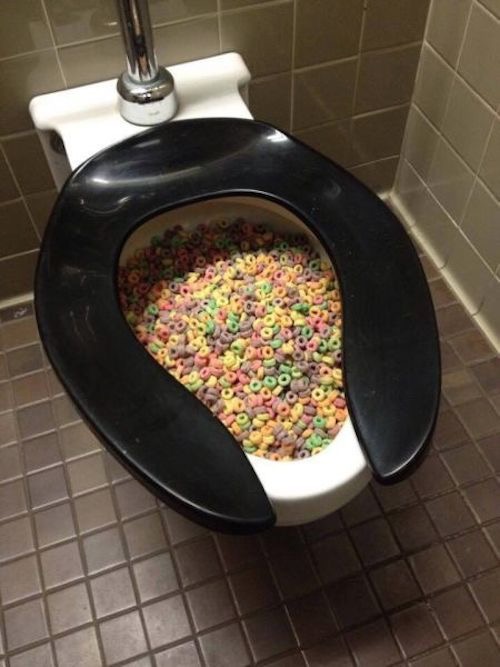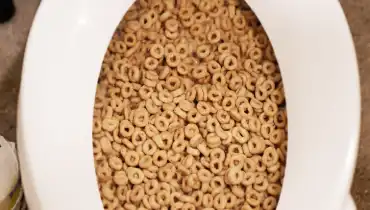Is it Recommended to Dispose of Food Down the Toilet?
Is it Recommended to Dispose of Food Down the Toilet?
Blog Article
The article author is making several great annotation regarding Flushing Food Down the Toilet? in general in this content down the page.

Intro
Lots of people are often confronted with the dilemma of what to do with food waste, especially when it concerns leftovers or scraps. One common inquiry that arises is whether it's all right to flush food down the toilet. In this short article, we'll delve into the reasons individuals might think about purging food, the repercussions of doing so, and alternative techniques for proper disposal.
Reasons individuals could take into consideration flushing food
Lack of awareness
Some people might not know the prospective harm brought on by purging food down the commode. They might erroneously believe that it's a harmless method.
Benefit
Flushing food down the toilet might look like a quick and very easy solution to getting rid of unwanted scraps, especially when there's no neighboring trash can offered.
Negligence
In many cases, people might simply pick to flush food out of sheer idleness, without taking into consideration the effects of their actions.
Repercussions of flushing food down the commode
Environmental effect
Food waste that winds up in rivers can add to pollution and damage marine environments. In addition, the water made use of to flush food can stress water sources.
Pipes concerns
Purging food can cause clogged pipes and drains pipes, creating expensive plumbing repair work and troubles.
Kinds of food that must not be flushed
Coarse foods
Foods with coarse appearances such as celery or corn husks can get entangled in pipes and create blockages.
Starchy foods
Starchy foods like pasta and rice can absorb water and swell, bring about obstructions in pipelines.
Oils and fats
Greasy foods like bacon or cooking oils need to never be flushed down the commode as they can strengthen and trigger clogs.
Proper disposal techniques for food waste
Using a garbage disposal
For homes geared up with waste disposal unit, food scraps can be ground up and flushed through the plumbing system. Nevertheless, not all foods appropriate for disposal in this manner.
Recycling
Particular food product packaging products can be reused, minimizing waste and lessening environmental impact.
Composting
Composting is an eco-friendly method to get rid of food waste. Organic materials can be composted and made use of to improve soil for horticulture.
The value of correct waste monitoring
Minimizing environmental harm
Appropriate waste management techniques, such as composting and recycling, assistance minimize contamination and preserve natural resources for future generations.
Protecting plumbing systems
By preventing the technique of flushing food down the toilet, house owners can prevent costly plumbing repair services and preserve the stability of their pipes systems.
Final thought
Finally, while it might be tempting to flush food down the bathroom for comfort, it is essential to comprehend the prospective consequences of this activity. By embracing proper waste monitoring techniques and throwing away food waste properly, people can contribute to much healthier pipes systems and a cleaner atmosphere for all.
FLUSH FOOD DOWN THE TOILET?
FLUSHING FOOD CAN CAUSE BLOCKED DRAINS IN YOUR HOME
All of the plumbing fixtures in your home are connected to the same sewer pipe outside of your home. This outdoor sewer pipe is responsible for transporting all the wastewater from your home to the Council sewer mains. Even small pieces of food that go down the kitchen sink can cause problems for your sewer. It should therefore be obvious that flushing larger bits of food, such as meat, risks a clog in either the toilet itself or the sewer pipes. Flushing greasy food is even more problematic because oil coagulates when it cools, coating the interior lining of your pipes.
THE TOILET IS NOT A BIN
Food isn’t the only thing that people shouldn’t be flushing down the toilet. People use the toilet to dispose of all kinds of things such as tampons, makeup wipes, dental floss, kitty litter and even underwear. Water goes to great lengths to educate residents about the high costs and stress placed on wastewater treatment systems simply from people flushing the wrong stuff down the toilet. It costs taxpayers millions of dollars each year, and homeowners thousands in blocked drain repairs.
FLUSHING FOOD IS A WASTE OF WATER
Flushing food is a waste of our most precious resource - water. In June this year Level 1 water restrictions were introduced to protect water supply from drought conditions. Much of New South Wales continues to be affected by prolonged drought with recent figures revealing up to 97 per cent of the state remains in drought. Depending on whether you have a single or dual flush toilet, every single flush uses between five and 11 litres of water. In the current climate this is a huge amount of water to be wasting on flushing food that should be placed in the bin (or better yet, the compost).
https://www.jabplumbingsolutions.com.au/blog/can-you-flush-food-down-the-toilet

I am very interested in Is it safe to flush food (especially rice) down the toilet? and I am hoping you enjoyed our post. Do you know about somebody else who is truly interested in the topic? Be sure share it. Thanks a bunch for your time. Please come by our website back soon.
Schedule An Appointment Report this page